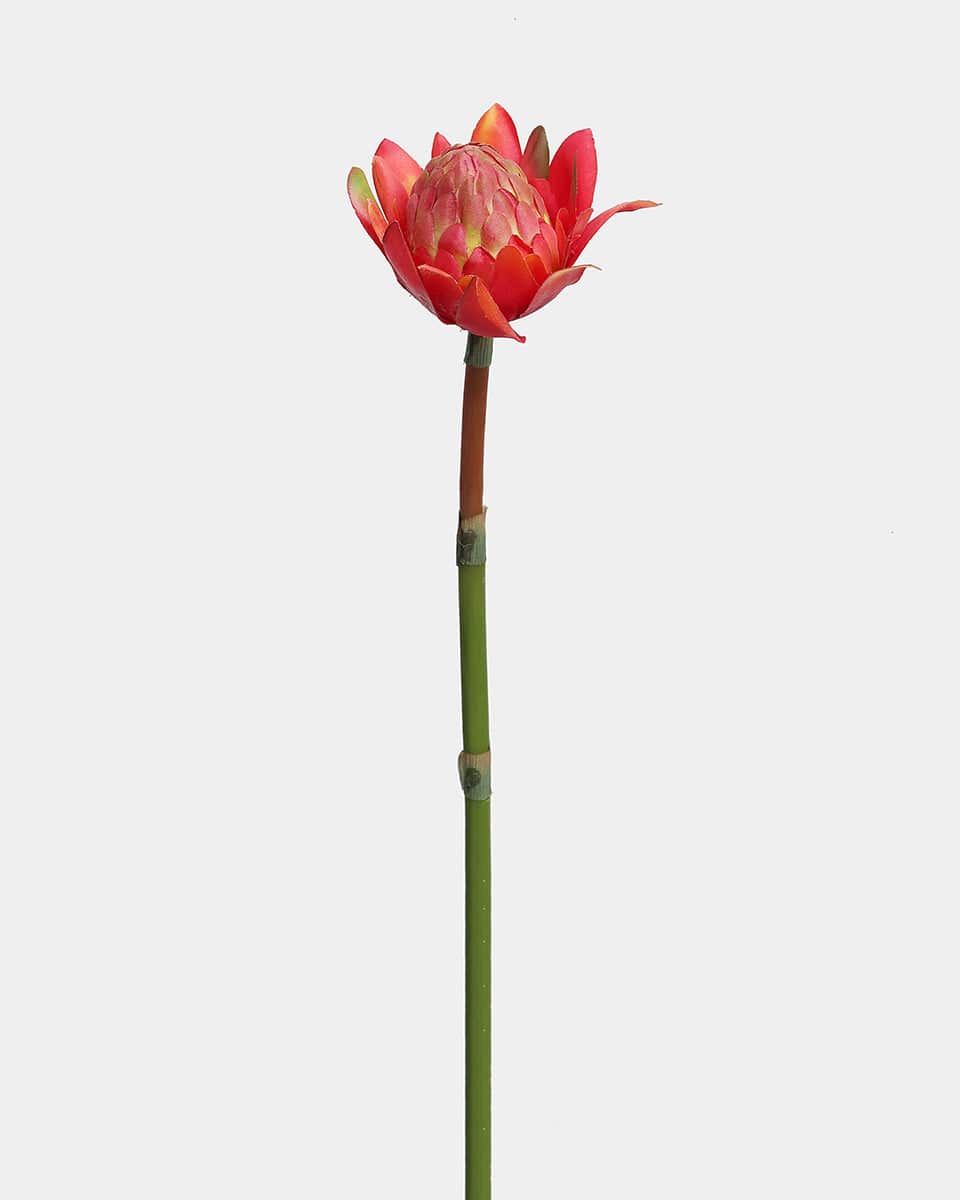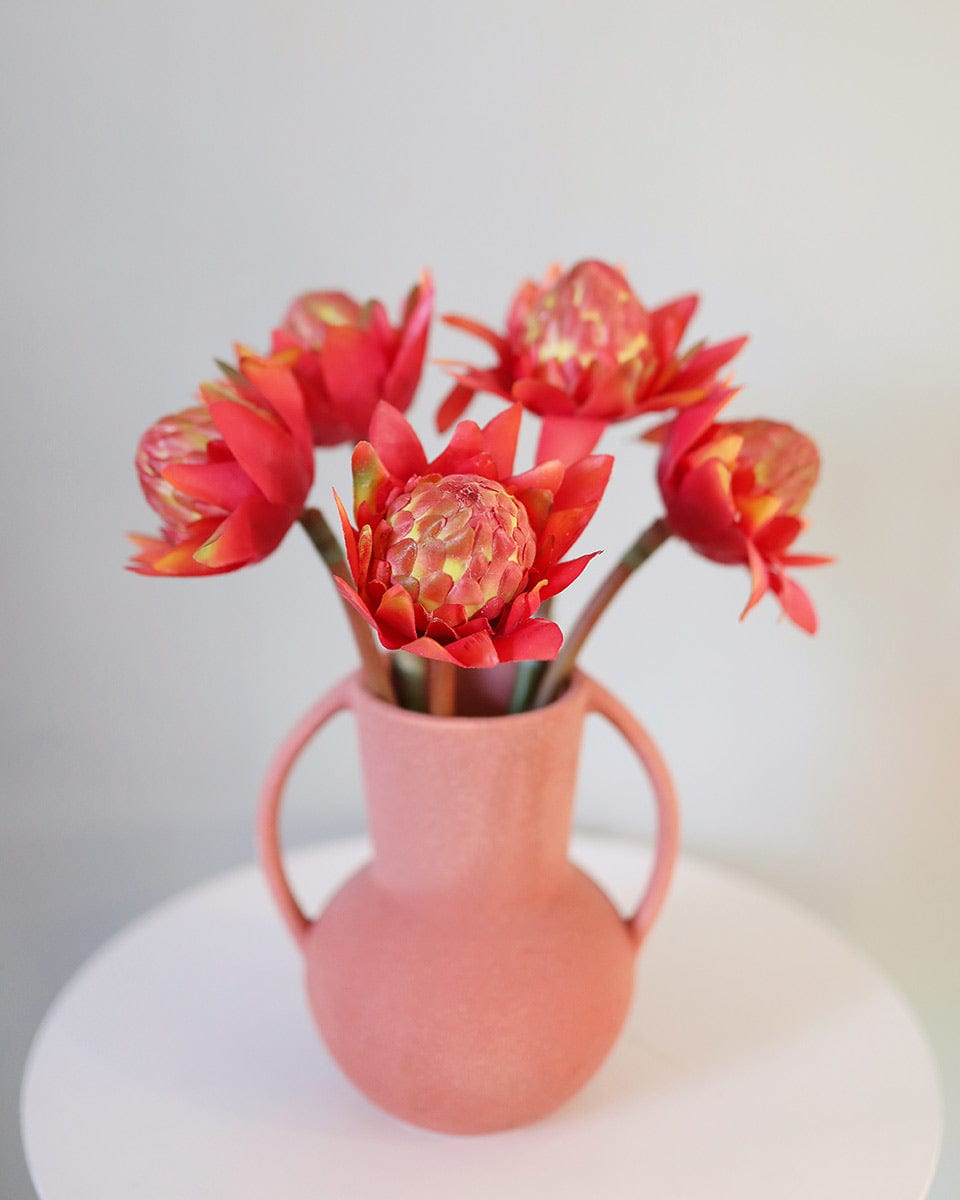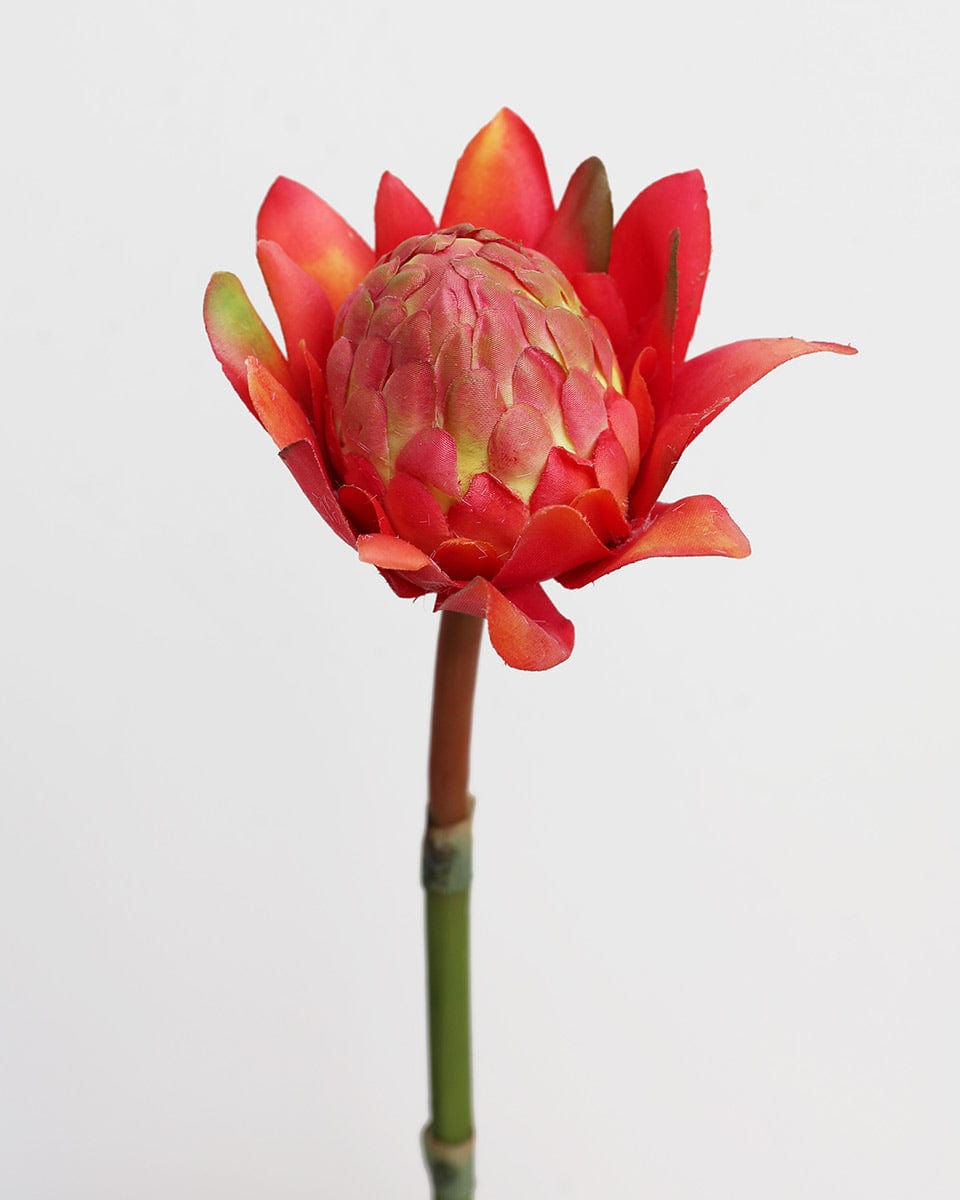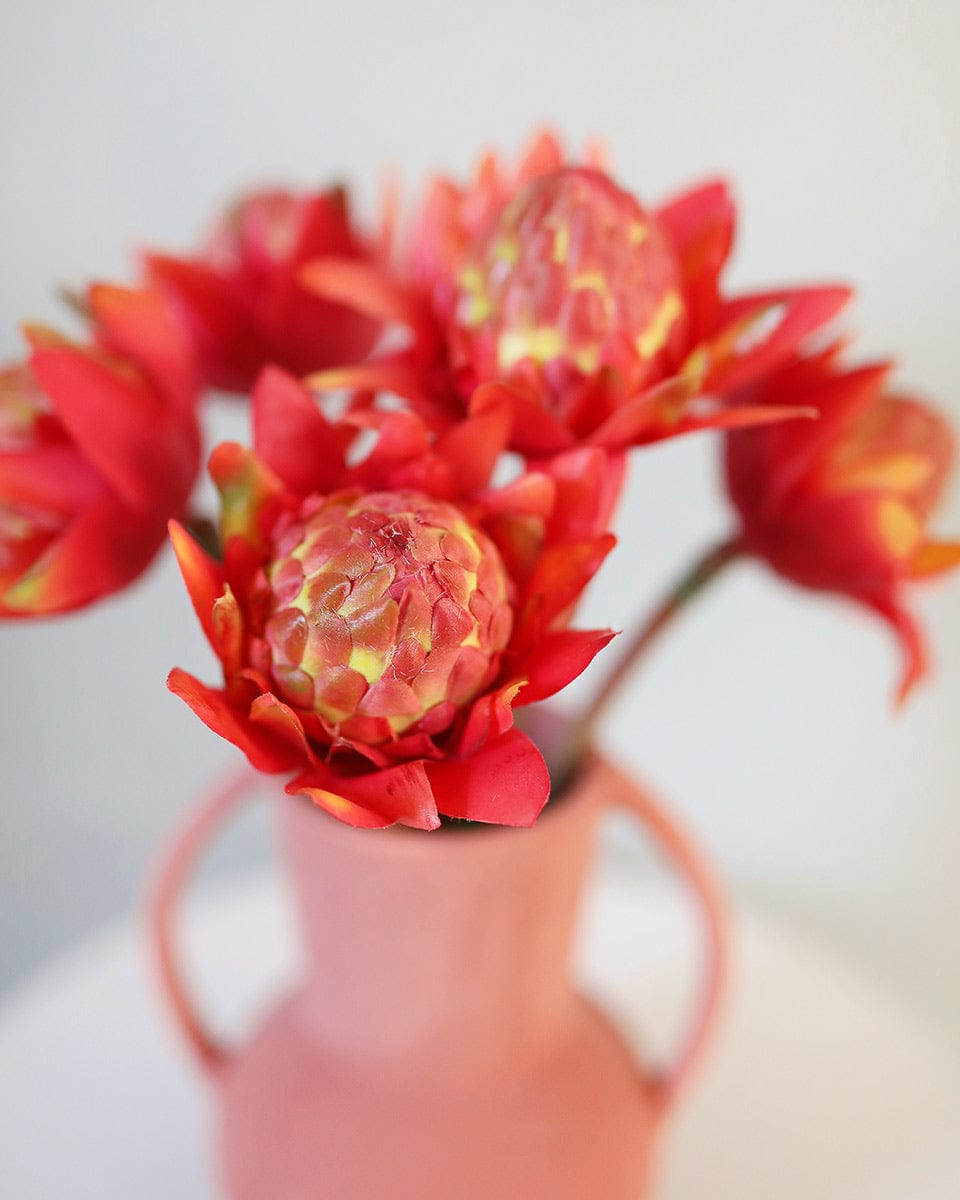



As Seen on
































































































































































More About This Stem
Bring the beauty and grandeur of this iconic Australian flower to your decor. Crafted with meticulous attention to detail, this lifelike bold red orange tropical faux protea captures the essence of the real Waratah, showcasing its majestic blooms and striking foliage.
Each individual petal and leaf is intricately designed to replicate the distinctive appearance of the Waratah protea. The artificial protea serves as a striking focal point in any floral arrangement or standalone display. Whether used as a centerpiece at weddings, events, or home decor, its commanding presence exudes sophistication and elegance, making a lasting impression on anyone who beholds it.
Unlike real flowers, our artificial protea requires no maintenance or watering, allowing you to enjoy its everlasting tropical beauty with zero effort.
60 Day Money Back Guarantee
World's Most Realistic Artificial Flowers
Shipped fast & securely from Chicago
Indistinguishable from Real Waratahs
Design Endless Bouquets
Save Thousands on Fresh Flowers
Enjoy flawless blooms for years while saving thousands on fresh flower replacements
Beautiful Blooms Without the Sneezing
Perfect for sensitive spaces and allergy sufferers - all the beauty of fresh flowers with zero pollen or irritants.
The Pursuit of Excellence:
Making a Prestige Botanical
Trusted by 50,000+ Interior Designers, Wedding Planners & Flower Lovers


Beautiful Quality
Very pleased with my first order of real touch flowers. The camelias, white roses, and anemones are beautiful quality.. Already ordered again!

Cesia J.

Really Great Product
Really great product, looks like the photos. Delivered in a secure, carefully packed box in the time frame posted.

Kevin R.

Quality is Amazing
The flowers are the most beautiful I've used in arrangements. The red magnolias pop with vibrant color... the quality is amazing and worth it.

Jean M.

Very Realistic
Great quality. Very realistic. Added the pop of color to my vase

Letica A.
Read More Reviews
Why Choose Prestige Botanicals?
Prestige Botanicals
Other artificial flowers
Indistinguishable from Real Flowers
Handmade Construction, and hand painted finishes over 90 days
Rich, multi-tonal hues with natural color variations
Built to last decades
Flexible, shapeable stems and leaves for total styling control
High quality construction materials
60 Day Money Back Guarantee
Patanted unique 'Real Touch' Technology
Exclusive Product - not available anywhere else
Mass Produced
Pristine Packaging for Perfect Arrivals
- Our arrangements arrive as works of art, beautifully presented and perfectly preserved.
- Signature long boxes: Specially designed to protect each delicate stem.
- Premium tissue wrapping: Keeps every petal pristine and picture-perfect.
- Reliable delivery times: Tracked and scheduled to ensure your botanicals arrive exactly when you expect, in flawless condition.













